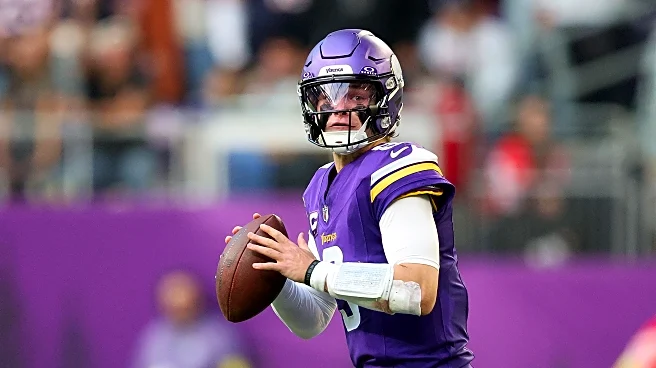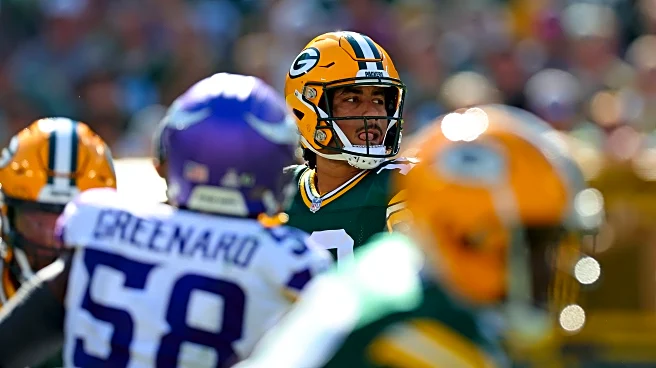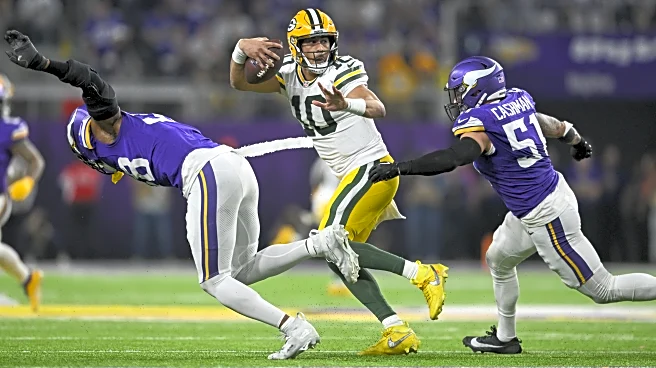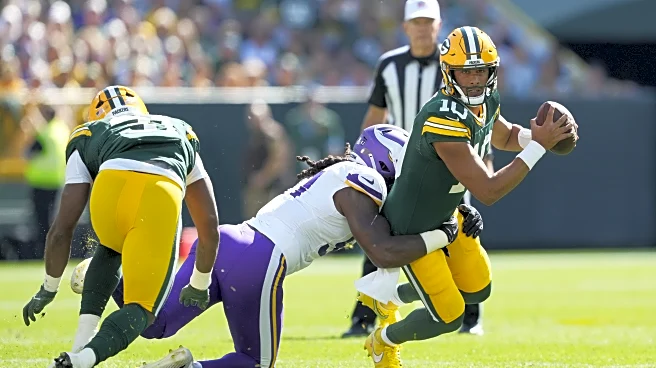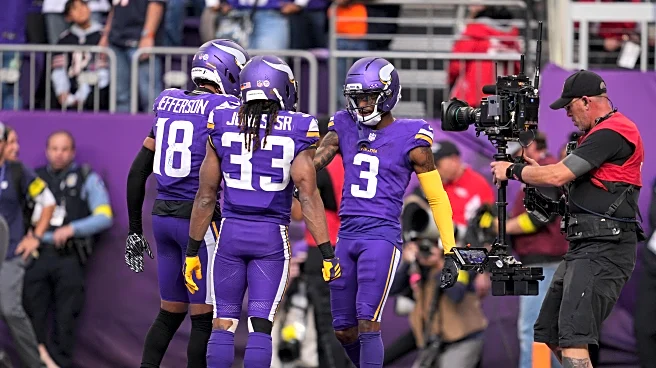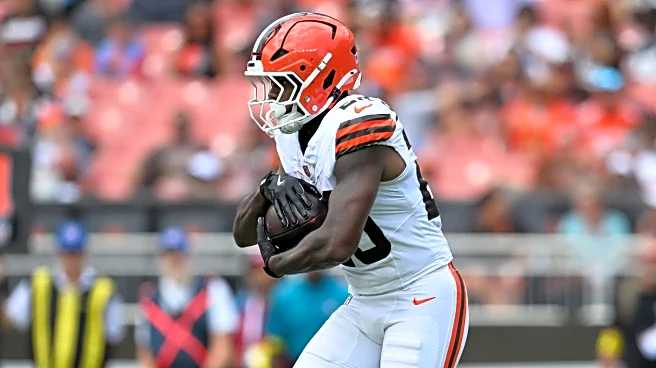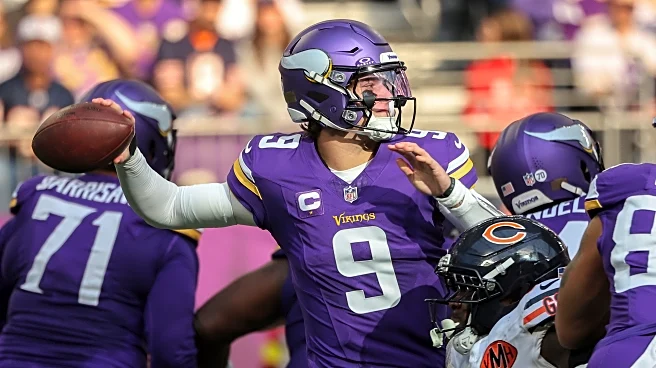Going up against a Brian Flores defense is a unique challenge. Not only is the Minnesota Vikings’ defensive coordinator well known as a maniacal blitzer, he seems to find new ways to blitz every week. He has been a forward-thinking coach who has driven changes in blitz strategy across the league, while also breaking those tendencies as he sees fit. In short, Flores may legitimately be a genius.
From what I’ve looked at, his defenses can be particularly effective against teams that play with a lot
of condensed formations. He’ll look to cause chaos up front, threatening to blitz with a lot of defenders at the line before dropping them out at the snap. As I said, he’ll blitz – NFL Pro has the Vikings with a 57% blitz rate since coming out of their week 6 bye – but he’s not always blitzing everyone he’s showing and you don’t know where they’re all coming from.
Playing out of condensed formations can make that tricky as it allows an offense to hold a pre-snap disguise longer, while also being able to drop back into areas of the field that aren’t far from their starting point.
Which is why going with more spread formations can be effective against this defense. You force the defense to either spread out with you (signaling their intentions before they want to) or stay close to the line and make the off-the-line drops more difficult for themselves.
This is also true of the safeties. If everything is condensed, they are better able to show a single-high look pre-snap and roll back to a two-high post-snap. Out of spread, some of those actions become more difficult. While this is true for all modern defenses, it presents a unique challenge to the way this Vikings defense likes to operate. They want to live in chaos, but it’s harder to cause that chaos if the offense is forcing you out from the line.
Which brings us to this game, and creating explosives.
Every week, I’ve been tracking a stat I’ve been calling Explosive +/-. Basically, how many explosive plays you’re creating on offense vs. how many explosive plays you’re giving up on defense. Per a study by Brian Billick, teams that have had a +2 Explosive Play +/- in a game have won that game 80%-85% of the time. So one thing I tend to do when looking ahead to the next opponent is to look at how teams have generated explosives against them, then find trends and/or things that could work for the Packers.
For the season, the Green Bay Packers are #1 in the league at Explosive +/- at +3.0. They are generating 7.7 explosive plays per game (tied with the Patriots for 4th in the league) and giving up 4.7 explosive plays per game (2nd in the league). The Vikings are -0.2 in Explosive +/-, tied for 19th. They’re generating 6.6 explosive plays per game (tied for 14th) and giving up 6.8 explosive plays per game (tied for 20th).
As I laid out above, attacking this Vikings defense out of spread formations are a good way to do that. It can diminish the impact of the chaos they’re trying to cause up front and allow the QB to more easily diagnose what they’re trying to do. That can lead to the QB being able to find their subpar cornerbacks in one-on-one situations.
The Chargers are in a 3×1 spread look and the Vikings are showing 5 men at the line, two-high safeties and tight coverage from the outside cornerbacks. The spread look gets the safeties split wide, so when the safety drops down over the passing strength post-snap, it gives the QB an easy read: take the vertical route on the outside.
The Lions are in a 3×1 spread look and the Vikings are showing 4 men at the line plus the threat of a slot blitz off the Trips side. They’re in a single-high look, with the safety over the passing strength. Operating out of a spread formation, the QB knows he has a one-on-one with his WR at the bottom of the formation, unless the safety bails immediately across the field at the snap.
At the snap, the safety to the bottom threatens to drop back into a two-high look before cutting off his drop to pick up a crossing route. The QB checks the safety to the passing strength, sees him held in place then throws the one-on-one.
If that out of a condensed formation, the threat of the safety bailing to the one-on-one is a little greater, since he would have less ground to cover.
In this last clip, the Lions are a little tighter to the line, but they still have their two widest receivers outside the numbers. The Vikings are showing 6 men at the line and a single-high safety placed directly in the middle of the field.
They send 4 on the rush, dropping two back into zones while Harrison Smith bails back to a safety position into a two-high look. The spread receivers on the outside forces a wide drop from the safeties, leaving the middle of the field open. The QB checks the dropper in the middle to make sure he’s not carrying the TE up the seam, then rips a shot to the middle of the field.
Even if the dropper is carrying the TE, he’s not at a great initial angle to do it well, so the QB likely would have put a little more air under the ball and led him upfield. With the safeties split wide, there’s plenty of room to do that. The spacing on this could be muddled out of a condensed look, but the spread look forces the safeties wide and gives the TE a wide open area to operate in.
While the Packers tend to be a team that operates out of a condensed formation more often than not, LaFleur has shown a willingness to open up the formation when he needs to. Last week against the Giants, we’ve seen more spread looks out of this Packers offense than we’ve seen all season. With as gameplan specific as he has been with the offense over the past year, I wouldn’t be shocked to see that continue this week.
Albums listened to: Boo Boos – Young Love; Jimi Hendrix – Axis: Bold As Love


